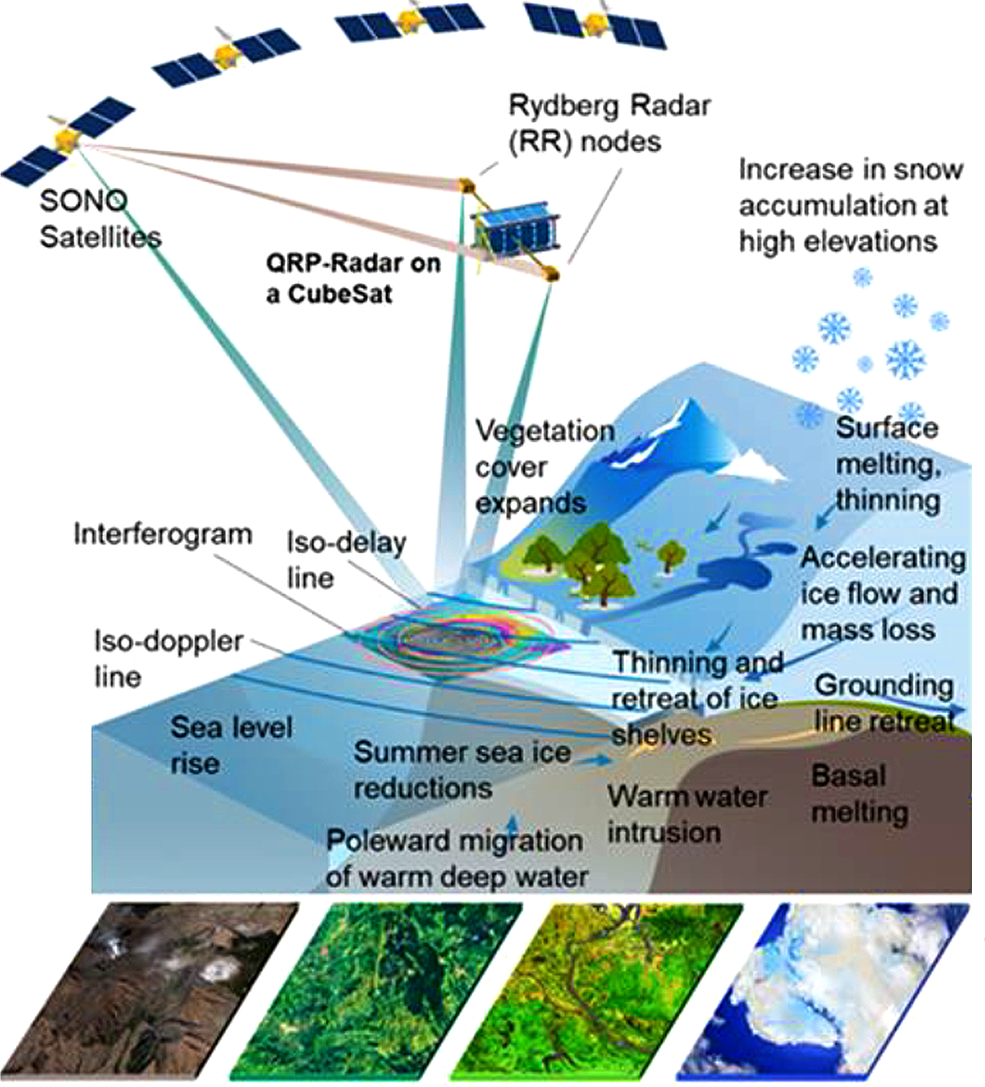Quantum Rydberg Radar for Surface, Topography, and Vegetation
Darmindra Arumugam
NASA Jet Propulsion
This proposal advances the Quantum Rydberg Radar (QRR) receiver architecture to utilize a combination of signals of opportunity (SoOp) and non-opportunistic (NO) science signaling (jointly termed SONO) in a broad array of applications covering NASA Surface, Topography, and Vegetation (STV) science objectives. In particular, STV science applications addressed are Solid Earth (SE), Land Surface Hydrology (LSH), Vegetation Structure (VS), and the Cryosphere (CS). The Quantum Rydberg Radar technology provides the promise of ultra-broad-spectrum radar polarimetric measurement capability covering the ‘radio window’ (I-to-K band, or 0.1-22 GHz) on a single compact detector/sensor.
Rydberg receivers in QRR utilize quantum states and energy levels of excited Rydberg atoms for sensing – alkali atoms placed in a vapor cell that are excited optically to Rydberg states, where radio-waves impinging alters the resonant state of the atoms. This approach exploits the sensitivity of the high-lying Rydberg states to RF/microwave fields. Within one vapor cell, accurate measurements of a RF-fields over a frequency range from 10 MHz to >500 GHz are possible. Rydberg atoms are atoms with one or more electrons excited to a very high principal quantum number, n. These Rydberg atoms have large dipole moments (scale as n squared). The sensitivity and ultra-broadband nature make these promising for next generation radars and radiometers. Rydberg receivers are dynamically tunable post-launch.
Numerous key advances in modeling and systems have been made during the NIAC Phase I, to include the first known Rydberg measurement of satellite signals (via a Rubidium preparation, Rb-85, 5S1/2-5P1/2-35D3/2 to measure XM satellite signals).
In this NIAC Phase II proposal, we advance QRR to address key upcoming NASA needs for STV mission in the 2030’s (surface, topography, and vegetation) – which addresses science applications in solid earth, land surface hydrology, vegetation structure, and the cryosphere. The Phase II effort addresses key remaining experimental, modeling/simulations, and technology demonstrations to advance this important technology in preparations for a high-altitude balloon demonstration and a future space validation.

































